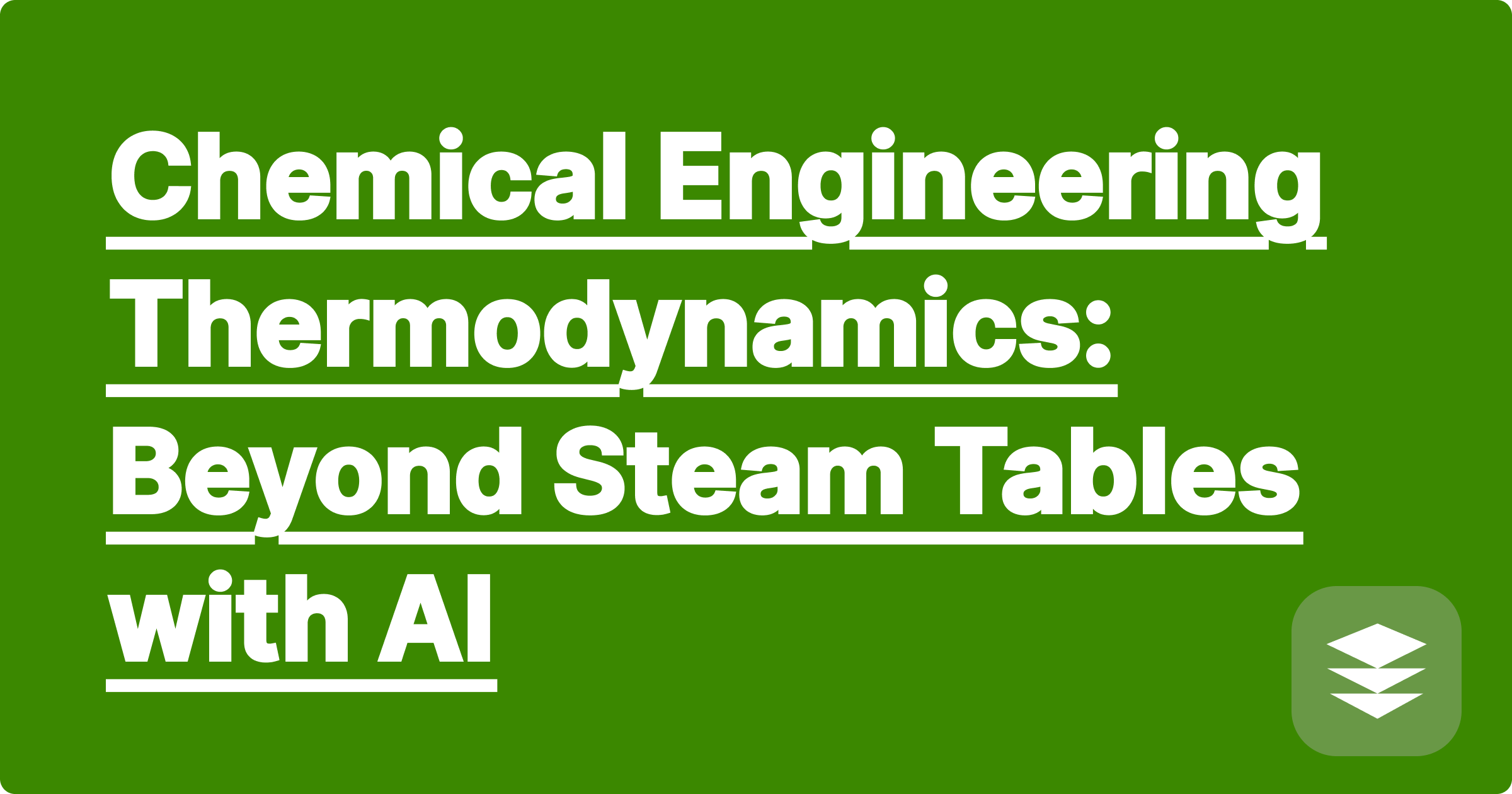
You're in a Chemical Engineering Thermodynamics class. You've moved beyond the ideal gas law and into the complex world of real fluids, phase equilibria, and energy balances for entire chemical processes. A huge part of your homework involves one notoriously tedious task: looking up values in steam tables or other thermodynamic property tables.
You're constantly flipping to the appendix, interpolating between values, and risking a small error that throws off your entire calculation. This manual data lookup is slow, frustrating, and distracts from the real engineering problem.
What if you had an assistant that had all those tables memorized and could apply them instantly within a larger problem? This is how an AI for chemical engineering thermodynamics problems can change your workflow, moving you beyond the tables and into true ai for process simulation.
Steam tables and other property data are the bedrock of thermodynamics, but they are a major bottleneck in problem-solving.
A specialized AI tool like GPAI Solver has this data built-in. It doesn't need to "look up" the enthalpy of superheated steam at a given temperature and pressure; it knows it. This allows it to solve problems in a single, seamless workflow.
A Typical Problem: "Superheated steam at 3 MPa and 400°C enters a turbine and exits at 50 kPa as a saturated liquid-vapor mixture with a quality of 90%. What is the work output of the turbine per unit mass?"
How GPAI Solver Handles It:
This ability to integrate data allows for a basic form of ai for process simulation. You can model a simple Rankine cycle by linking several components together.
Your Prompt: "Consider a simple Rankine cycle. The boiler operates at 3 MPa, the condenser at 50 kPa. The steam enters the turbine at 400°C and exits the condenser as a saturated liquid. Calculate the thermal efficiency of the cycle."
The AI can then solve for the enthalpy at all four points of the cycle (boiler outlet, turbine outlet, condenser outlet, pump outlet), calculate the net work and heat input, and determine the final efficiency, showing you every step and every data value it used.
Use the GPAI Cheatsheet builder to create a powerful study guide for your final.
This creates a guide that combines theory, formulas, and practical problem-solving workflows.
Your job as a chemical engineer is to design and analyze processes, not to be an expert at reading tables. By using an AI assistant that handles the tedious data lookup, you can free up your mental energy to focus on the higher-level thermodynamic principles that truly matter for your education and your career.
[Struggling with your ChemE thermo homework? Try GPAI Solver today. Let the AI handle the steam tables so you can focus on the engineering. Sign up now for 100 free credits.]
Visualizing Metabolic Pathways: An AI Guide for Biochemists
A Smarter Way to Do Your Genetics Homework: Punnett Squares and Pedigrees with AI
Chemical Engineering Thermodynamics: Beyond Steam Tables with AI
Transport Phenomena Explained: An AI Solver for Momentum, Heat, and Mass Transfer
How to Write a Molecular Biology Lab Report That Gets an A
Reactor Design and Kinetics: An AI Tool for Your Toughest Homework
The Ultimate MCAT Biology & Biochemistry Cheatsheet, Built by AI
From Lab Data to Publication-Ready Graphs with an AI Assistant
Process Control Homework Simplified with AI
How to Memorize Hundreds of Medical Terms with an AI-Powered Notetaker